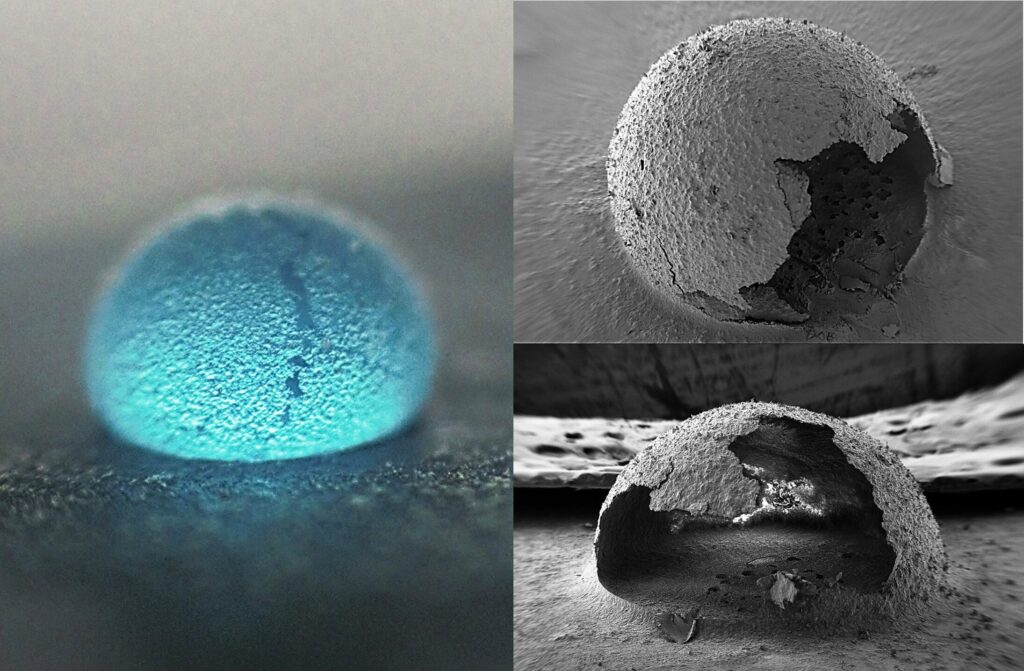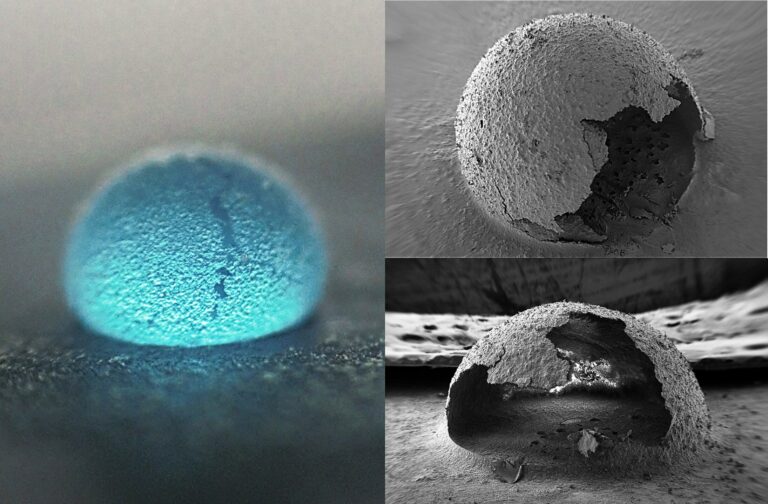Researchers develop adjustable shells for enclosing minuscule droplets.
Scientists from the Indian Institute of Science (IISc) have devised an innovative method for enveloping liquid droplets with versatile applications, such as single crystal growth and cell culture. The method leverages the capillary effect, the upward movement of a liquid in a narrow space, to form a composite shell around droplets containing both oil-loving and hydrophobic particles.
This technique allows for the precise adjustment of shell thickness across a broad range, enabling the encapsulation of droplets of varying sizes. The findings have been published in Nature Communications. Droplets play a crucial role in diverse fields. Lead researcher Rutvik Lathia, a Ph.D. student at the Center for Nano Science and Engineering (CeNSE), IISc, elaborates, “
In microreactors, droplets can create distinct reaction environments or mix different chemicals. In drug delivery systems, droplets facilitate the targeted delivery of drugs or other agents to specific tissues or organs. In crystallization studies, droplets are instrumental in controlling crystal growth. Additionally, in cell culture platforms, droplets are employed to cultivate cells in a regulated environment, enhancing cell viability and proliferation.”

Nevertheless, employing such droplets poses numerous challenges. They are susceptible to contamination from the surrounding environment, the efficacy of a specific process heavily relies on the surface onto which they are deposited, and they can quickly dissipate. While enclosing droplets with substances, either liquid or solid, that do not mix with the droplets (such as water droplets encased in an oil shell) offers a potential solution to these issues, creating a robust, continuous shell with adjustable thickness at an extremely small scale has proven elusive.
In response to these challenges, Prosenjit Sen, Associate Professor at CeNSE, and his team have introduced a novel capillary force-assisted cloaking method to trap droplets within colloidal particles and liquid-infused surfaces. Initially, they meticulously coated droplets with small hydrophobic and oil-attracting beads, transforming them into what they term “liquid marbles” (LM). Placing these LM on oil-infused surfaces triggers capillary forces, causing the oil to ascend into tiny pores formed between individual beads. These beads play a pivotal role in facilitating and stabilizing the formation of a liquid film around the droplet, effectively encapsulating it.
The researchers also demonstrated the ability to use wax instead of oil to create a solid shell by adjusting the temperature. This encapsulation technique reduced the evaporation rate of droplets by up to 200 times, extending the lifespan of these droplets significantly. Furthermore, they could flexibly adjust the shell thickness across a broad range, from 5 μm to 200 μm, enabling accommodation of droplets with volumes ranging from 14 nL to 200 μL. Sen states, “Our method of encapsulating droplets introduces a multitude of new opportunities in the realm of droplet-related applications. The tunable nature of the shells, both solid and liquid, allows for precise control over various parameters, making it versatile for applications in chemistry, biology, and materials science.”
The researchers utilized these coated droplets successfully to cultivate single crystals and for biological applications such as 3D cell culture, achieving improved success rates in growing yeast cells in the laboratory. “Currently, we can produce wax-based solid capsules and oil-based liquid capsules,” Sen adds. “Now, we are exploring new materials to form capsules with different properties that could enhance tunability further, such as polymer-based capsules.”
This article is republished from PhysORG under a Creative Commons license. Read the original article.
Do not forget to share your opinion with us to provide you with the best posts !




0 Comments